On an early spring day in Dorotcaia in eastern Moldova, about 100 people gather in the central square, in front of the renovated House of Culture. Behind them, a monument dedicated to the Red Army soldiers who liberated the village in 1944 shines in the sun. Mostly, the crowd is made up of elderly men and women. The worried faces of the women are framed by the headscarves so ubiquitous in this part of the world.
The group listens intently.
“They don’t invite you into Europe. They invite you into Europe’s ass,” a man on stage shouts into a microphone. Piotr Dobrinski is the leader of the so-called local soviet, a ghost institution left over from communist times and recognised only by the authorities in Transnistria, the breakaway region of Moldova that sits across the road from Dorotcaia.
Dobrinski, who considers himself the real leader of the village, is trying to mobilise support for a referendum on joining Transnistria, essentially a client territory of Russia.
Meanwhile behind the crowd an anxious mayor, Andrei Lesco, takes small, nervous steps. He sizes up the audience, looks at Dobrinski, and decides to make a move. He mounts the steps and addresses the people.
“My duty, as the legitimate mayor, is to ensure public order, to make sure that there are representatives of the government who can hear you and your demands,” he tells them. “We all want the Republic of Moldova to listen to our pain and our heart.” He pauses. “But if you don’t want that, go to Transnistria.”
Suddenly, the men and women start cheering happily. “Transnistria! We want to be in Transnistria!”
Lesco stands frozen. At the end, an old woman shouts, “You can stay in Moldova if you want to.”
EU deal
Moldova is preparing to sign a trade and association agreement with the EU on Friday 27 June, but only a few who went to listen to Dobrinski are likely to care whether the country is headed for EU membership, or whether Transnistria gets its wish to be internationally recognised as an independent state. For them, Russians or Romanians are the same.
What they really care about is the land problem, and they hope Dobrinski can solve it.
When Transnistria declared itself separate from Moldova, some in this village of 3,500 people owned farmland on the other side of the road, and relied on it for subsistence. In 2003 authorities in the breakaway territory started limiting villagers’ access to the land, but international negotiators helped broker an agreement to resolve the impasse.
That pact expired in December, and the parties have not been able to agree on a new one. The only subsequent offer the farmers have received would effectively force them to lease land they once owned. Some have agreed.
Thus, some 2,600 hectares – about 85% of Dorotcaia’s farmland – is now off-limits to its residents unless they sign the new agreement.
The government of Moldova is working on a compensation plan for those who lost their land, according to Alexandru Zubco, a lawyer and member of Promo-LEX, a human rights group in Chisinau that mainly works on issues in Transdniester.
A week after the crowds came to hear Dobrinski, deputy ministers from the Moldovan capital, Chisinau, came to the village to talk about the land situation. They used words such as “complicated”, “patience”, and “political insecurity” and gave the residents little comfort. Across the road in Transnistria, some villagers said, people have a better life.
“The pensions are higher, the utilities are cheaper,” 71-year-old Ana Ivanovna said.
A few weeks later, Dorotcaia seems quiet. On the main street, amid the post office, the House of Culture, and the monument to Soviet heroes, is a tiny history museum crammed into a shack.
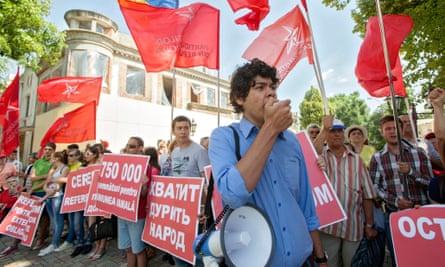
Its director, Andrei Berzan, said the village has long been caught between the east and west. It was on the front line in the second world war from 1941 to 1944, and again in 1992 when Transnistria fought a war to split from Moldova. On its streets have walked German, Soviet, Moldovan, and Transnistrian soldiers. The Red Army monument lists 700 Russian soldiers who liberated the village in 1944.
“Those were the real heroes,” Berzan says.
The quiet is only an illusion. In reality, the village is divided: some of its people have Transnistrian passports and dream of a glorious future when Dorotcaia will join the separatist region. Younger villagers, who don’t have nostalgic memories of Soviet times, count the days until 27 June, when Moldova is to sign an agreement on closer ties with the EU. They believe the pact will open the borders and make it easier for them to travel and work in Europe. Only recently Moldovans won the right to travel into the EU without a visa.
School wars
While the villagers in Dorotcaia look fretfully across the road at the plots they used to till, some students in a neighbouring village in Transnistria make a daily trip in the other direction; heading to Dorotcaia to learn in a way not permitted by the separatist authorities.
Stefan cel Mare si Sfant school in Grigoriopol was one of only eight schools in Transnistria that obeyed an order from the Moldovan government in 1989 to switch from the Cyrillic to Latin script. A subsequent order from the separatist authorities forced them to adopt the Cyrillic alphabet, and all schools in Transnistria were required to teach in Russian, Ukrainian, or Moldovan, an ungainly hybrid of Romanian and Russian using Cyrillic characters.
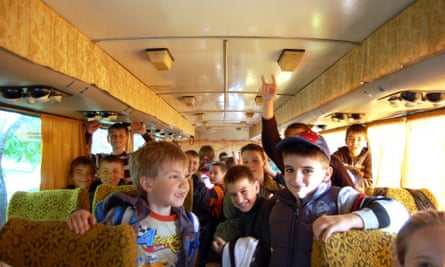
In 1996, when administrators at Stefan cel Mare repeatedly asked for permission to switch back to the Latin alphabet, the school came under intense pressure. Three teachers and administrators, including principal Eleonora Cercavschi, were arrested and held for a week. In a 2008 lecture she gave upon receiving a top international human rights award, Cercavschi said she was threatened with never seeing her children again if she persisted in teaching the Romanian language.
The educators were called “enemies of the state” in the local press, and in 2002 police in Transnistria “stormed the school and evicted the teachers, the pupils, and their parents who were inside it,” according to a summary of a case Promo-LEX argued before the European Court of Human Rights in 2009 on behalf of Cercavschi, her colleagues, and other plaintiffs. In an October 2012 ruling the court held Russia liable for violating the educators’ rights and ordered it to pay 1.02 million euros ($1.4 million) in damages. To date the award has not been paid.
The principal and teachers decided to move operations. They rented a couple of buses and – after reaching a tacit agreement with Tiraspol, the de facto capital of Transnistria – they started to teach “abroad” in Dorotcaia.
Every day, three buses filled with kids of all ages cross the border and park at the gates of a school in Dorotcaia. Three hundred pupils pour out of the buses with huge backpacks filled with books in Romanian.
In the building, some of the classrooms have filled up with Romanian-speaking children, while some have only one or two pupils.
“Most of the parents who send their children to our school keep it a secret. It’s a brave and risky decision, but they fight for their right,” Cercavschi says.
Even with the unspoken agreement, the school’s accounts in Tiraspol were temporarily frozen in January 2013, and the teachers could be stopped and arrested at the border at any time.
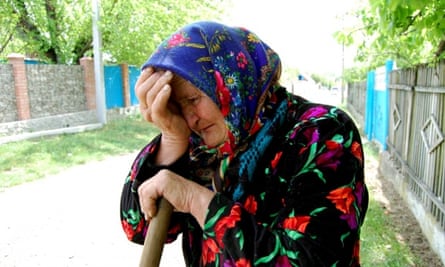
Ukraine comparison
Not far away, Ana Ivanovna is hoeing weeds outside the broken wooden fence around her front garden. The flowers on her blue headscarf match the tulips on her robe.
She’s cheerful and polite at first but starts crying when asked about the land problem.
“The situation is very bad. People are prohibited from crossing the border to sow seeds, but it’s the right time now. We have nothing else to live off of. What are we supposed to do?”
Ivanovna remembers the war in 1992. She points out the spot in her yard where Moldovan soldiers made camp. “They shot and destroyed my house. The windows, the armchairs, the fridge,” she says.
She leans on the hoe and whispers that she’s afraid of a new war. Asked about recent events in Ukraine, she blames the clashes on “Ukrainian fascist nationalists”. She has nephews working in Moscow and all her television channels are in Russian. For her, Ukraine is a land of chaos and anarchy.
“I keep hearing on TV that Moldova will join the EU, then Romania, and all those fascists will come to make us pay taxes on each cow and each chicken. I don’t want that. I’d rather live with Russians,” she says.
In a little shop on the main street, a shopkeeper explains how some people have negotiated the divide.
Valentina, who declines to give her last name, says her husband has a veteran’s pension from fighting on the side of Moldova during the separatist conflict. But it wasn’t enough for the couple to live on, so she took Transnistrian “citizenship” and brings home a pension three times higher.

That math is more or less confirmed by Lesco, the mayor, who says the minimum monthly pension in Moldova is 800 lei ($57), compared with 1,800 lei on the Transnistrian side.
Such largess is possible thanks largely to money and subsidies from Russia. For years Transnistria has not paid for its natural gas. The state-owned Russian energy giant Gazprom, which supplies the territory, has not collected on a bill that is nearing $4bn. It also gets $27m annually from Moscow for pensions.
Surrounded by candies, sausages, napkins, and cheap cigarettes, Valentina uses an old abacus to calculate. “If Moldova joined Romania and all these villages remained with Transnistria, we would be very happy,” she says.
Referendums, petitions and independence
Back in his office, Lesco seems angry. Or perhaps he just hates journalists.
“You write about this and the story gets bigger and bigger, while in reality there were only a couple of drunks in the square, demanding something that they don’t even understand,” he declares.
The Moldovan flag is everywhere in this empty room: on the pink wall, on the desk, next to the window.
“The newspapers said I’m the one who doesn’t want to join Transnistria, that I’m the one who doesn’t want to organise the referendum. But that’s a lie,” he says. “If they, the people, want that, I’ll do it tomorrow. But I’m telling you, I can’t let a couple of drunks decide the future of the village. What happens if Moldova joins the EU tomorrow, Ukraine blocks the border with Transnistria, and the region is strangled?”
Lesco, in his third term as mayor, dismisses Dobrinski as a “charlatan".

“He has no office, no secretary, no legislative or executive power whatsoever. He only jerks people around, promising them a good future,” he exclaims.
Going outside for a much-needed cigarette, Lesco warns that Dobrinski doesn’t give interviews.
It is easy to find Dobrinski – or anyone – in such a small village. Helpful residents lead the way, insisting that he is a good man.
His house is a small, square building with green walls and little white hearts on the gates, which open only when his daughter emerges to explain that he talks only with journalists from Transnistria.
“He will give interviews to anyone else when he gets an actual office and recognition. You’re invited to talk to him on that day. He works a lot to help people,” she says before turning around and walking away from the muddy road.
According to lawyers from Promo-LEX, that help includes drawing up petitions supporting recognition of Transnistria’s independence, to be sent to the separatist authorities. One teacher from the Stefan cel Mare school says she saw her name on one such list – although she had not signed anything.
Story and Dorotcaia photos by Lina Vdovii, a Moldovan freelance journalist in Bucharest, member of the Romanian Center for Investigative Journalism, and fellow at the Balkan Fellowship for Journalistic Excellence
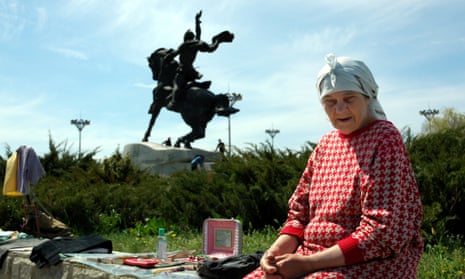

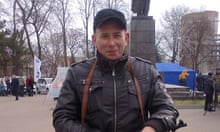


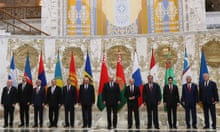
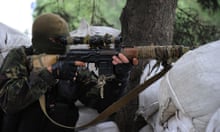



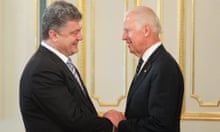
Comments (…)
Sign in or create your Guardian account to join the discussion